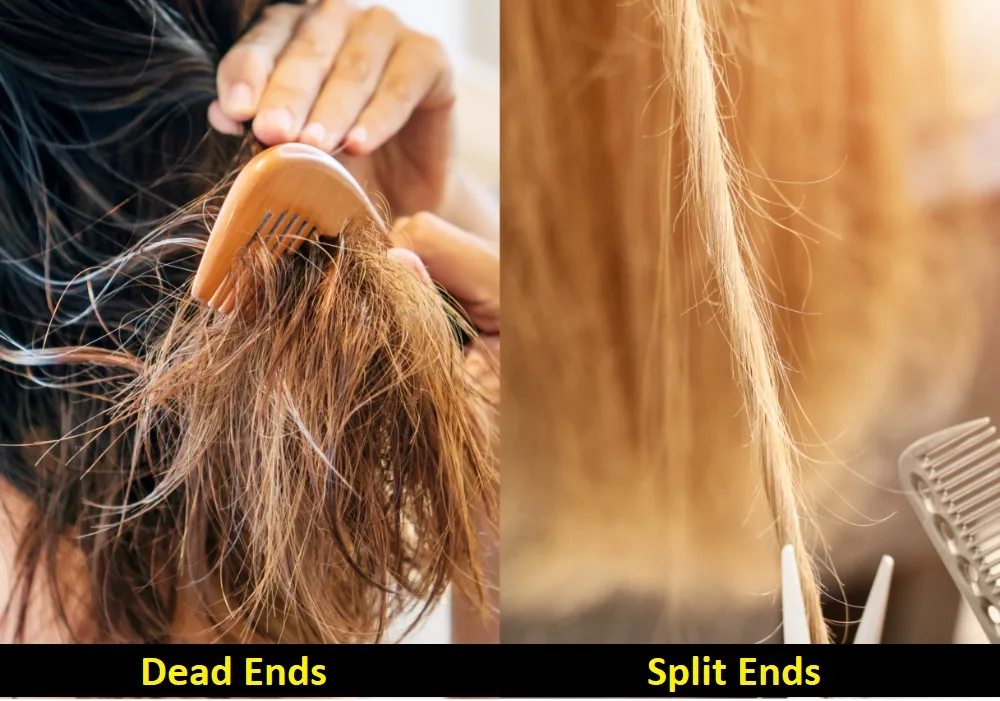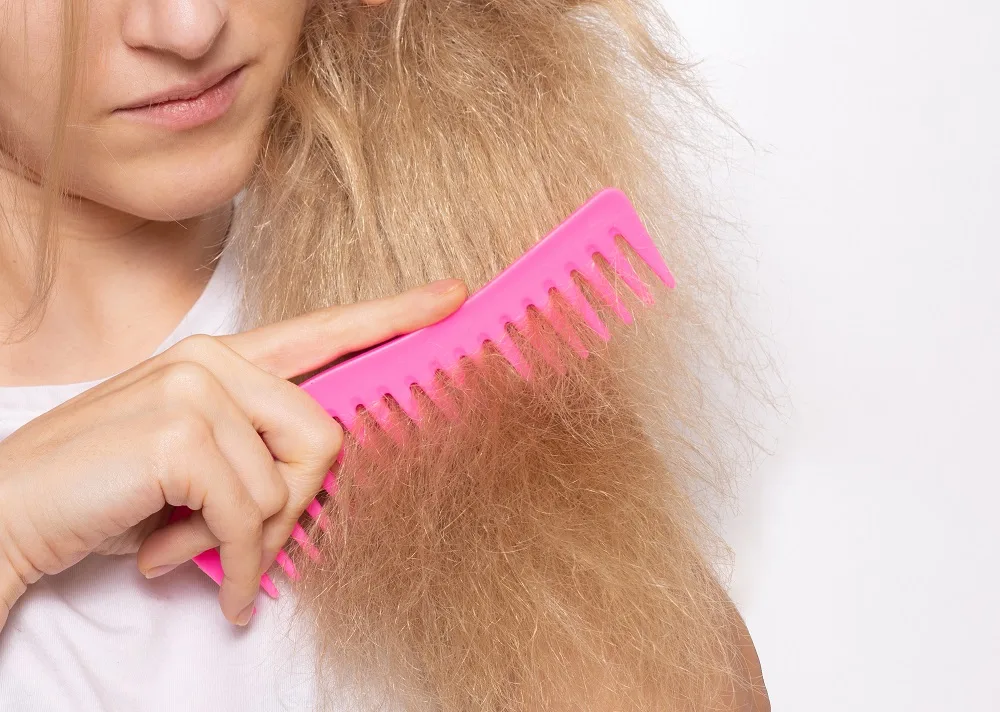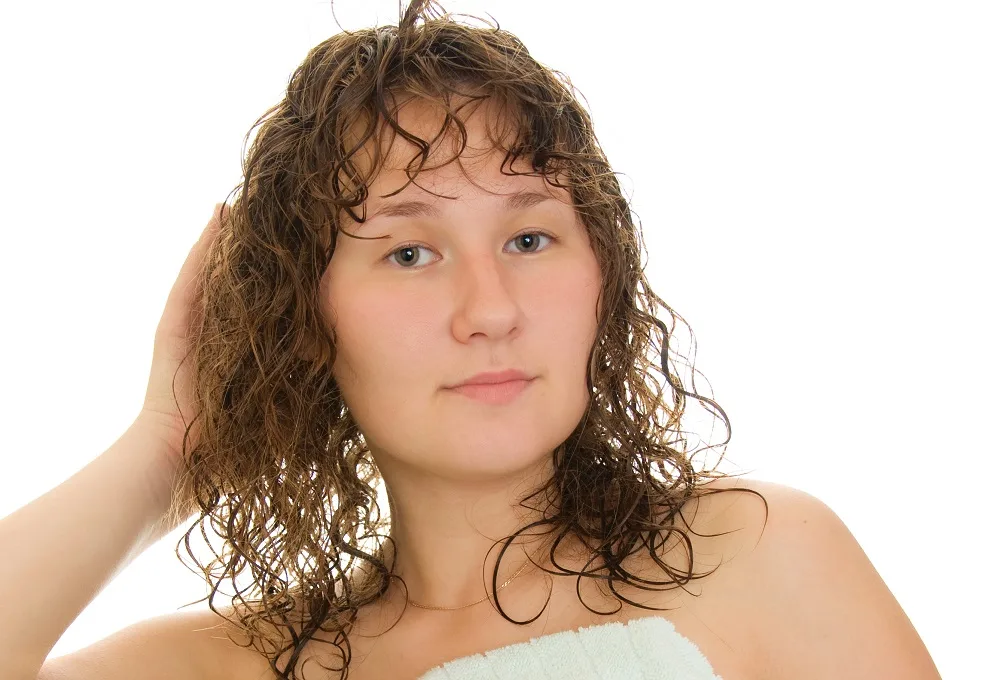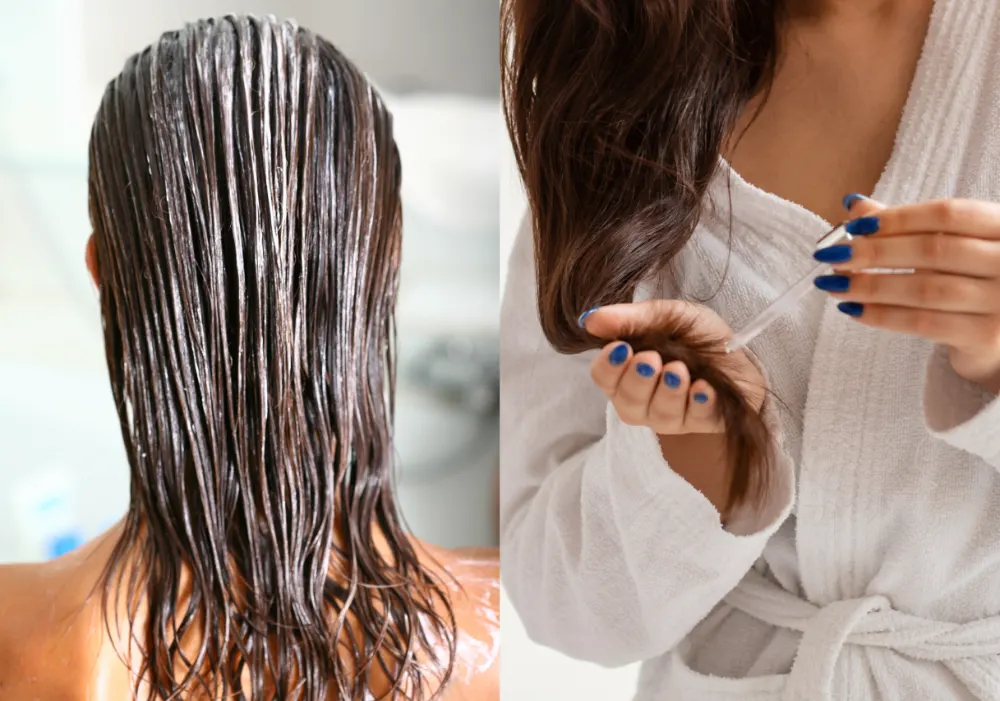Split or dead ends are common hair concerns, especially for those who make heat tools and chemical processing part of their normal beauty routine.
Knowing how to tell dead ends vs. split ends apart can help you craft a treatment plan that gets your hair back to feeling healthy, shiny, and silky smooth.
Highlights
- Dead ends result from the inner medulla of the hair strand dying due to long-term dehydration, chemical processing, or heat styling.
- Split ends are caused by overstressing the hair tips, which leads to a weakened and unraveling keratin cuticle.
- Dead ends can be identified by “gummy” or stretchy feeling, small broken pieces of hair, easily knotted hair, dull, frizzy, and lifeless appearance, bristly and brittle texture, and difficulty in brushing.
- Split ends are identified by forked hairs, dry and brittle hair, minor breakage, and knots.
- The only way to fix dead ends is to trim them off and change hair care routines to avoid chemical processing, heat styling, harsh shampoos, and replenish hair with gentle shampoos, hair oils, and intensive conditioning treatments.
- Split ends can be fixed by hydration treatments, hair masks, and avoiding the causes of split ends.
Are Split Ends the Same as Dead Ends?

Split ends are not the same as dead ends.
When you have split ends, that means that the tips of your hair– which is where the oldest growth is– have been overstressed by heat, chemical processing, or dehydration. Eventually, rough handling causes the keratin cuticle on the outside of your hair to weaken and unravel.
Over time, these splits can worsen, leaving the delicate inner medulla of your strands unprotected. Without the cuticle, the core can’t hold onto moisture or nutrients, causing the once-living inner section of hair to die.
Once the medulla dies, you are dealing with dead ends. Cutting dead ends off as soon as possible is the only way to prevent damage further up the hair shaft and give the rest of your hair a chance to heal.
Dead Ends vs. Split Ends
You can identify whether you’re dealing with dead ends vs. split ends by looking closely at how your hair feels and behaves.
How To Identify Dead Ends

Split ends don’t necessarily mean that you have dead ends, but they are usually the result of leaving your split ends unchecked.
Most people develop dead ends from repeated heat styling or chemically processing their hair too often without rehydrating their strands between treatments.
Harsh shampoos are also a common cause of dead ends because they strip excessive amounts of sebum, an oil produced by your body, out of your hair and off your scalp.
You can identify dead ends by looking for these signs:
- Your hair ends feel “gummy” or stretchy when wet.
- You find small pieces of broken hair on your shirt when you’re done brushing.
- The ends of your hair knot very easily.
- Your hair ends look dull, frizzy, and lifeless.
- When dry, the ends feel bristly and brittle, like a broom.
- It’s difficult to brush through your hair due to knotting and tangling at the ends.
How To Identify Split Ends

Identifying your split ends early is the best way to avoid dead ends, so you should check for signs of damage daily while brushing and styling.
However, newer split ends still have the same soft texture as the rest of your hair, making them more difficult to identify without close visual inspection.
Try pulling a 1-inch section forward in front of your face, and look closely at the end. Healthy hair will end in a straight line, while split ends branch off in one or more directions depending on how damaged your hair is.
You can also identify how far along the damage is by assessing what type of split your hair has:
- Y-splits are the beginning of damage, typically caused by excessive friction or moisture loss.
- Deep splits are Y-splits’ evolution as the damage moves up the hair shaft.
- Tree or feather splits signify that the cuticle is peeling away from the center core from all sides of your hair shaft, leaving it exposed to the elements.
- Taper splits are the last phase before the hair end dies. The hair core is completely exposed, causing the ends to look thinner than the rest of your hair.
Once split ends worsen, you’ll notice similar symptoms to dead ends, though they won’t be stretchy and gummy yet.
Your hair will feel dry and brittle, with some minor breakage. You might also notice that you have more knots than normal, especially at the ends, making it more difficult to detangle.
Difference Between Dead Ends and Split Ends at a Glance
| Dead Ends | Split Ends | |
| Cause | Long-term dehydration, chemical processing, | Heat styling, towel drying, and dehydration |
| Texture | Stiff and brittle | Same texture as the rest of your hair |
| Appearance | Frizzy, dull, and lifeless | Small, “forking” hairs along the hair shaft |
| Breakage | Break off easily when brushing | Does not break off when brushing |
| How to Fix | Trimming them off, then repairing any further damage with hair oils and intensive conditioning treatments | Hydrating treatments and hair masks |
How To Fix Dead Ends
No amount of deep conditioning treatments or hair oils can revive lifeless strands, so the only solution is to cut them off before they can do more damage.
Once you’ve trimmed your hair, you should change your hair care routine to fix any lingering damage and prevent the problem from happening in the future.
Avoid Chemical Processing
When you straighten, perm, or color your hair, the chemical treatment lifts the protective outer cuticle to penetrate the living inner core. Once it infiltrates the center, it breaks down and changes the keratin proteins forming healthy hair.
While your hair is still healing from damage, you should avoid any chemical processing to give the proteins time to regenerate and repair the hair shaft.
Skip Heat Styling

Too much heat styling is a leading cause of hair damage because the high temperatures lead to moisture loss.
Until your hair is healthy again, it’s best to let it air dry rather than using your blow dryer. You should also embrace your natural texture or find alternatives to flat irons or curling wands.
Braided styles can help you tame and texturize your tresses without worrying about heat damage.
Use Gentle Shampoos
If you want healthy hair, it needs sebum for strength and nourishment. It helps your locks hold onto hydration and act as a protective barrier against UV, heat, and chemical damage.
Conditioning treatments, intensive hair masks, and natural oils like jojoba and coconut can help replenish lost oils.
Still, a better long-term strategy is gentle shampoos that won’t strip out moisture every time you wash.
Nourish Your Hair

If you have dead ends, there’s a good chance of damage higher up on your hair shaft.
It’s critical to replenish your hair’s nutrients until it has time to rebuild the necessary proteins that give your tresses structure and strength.
Keratin-based treatments, like serums and conditioning masks, can infuse your hair with new protein bonds that help reseal the cuticle and strengthen the inner medulla. They can also help soften your hair by helping lifted cuticles and laying back down.
FAQs
Are you still wondering how to handle your hair end damage? We’ve covered some of the most common questions about split and dead ends.
Dry ends and split ends are not the same. Unlike dead ends, split ends can still absorb nutrients, so you can treat them with moisturizing treatments.
Yes, your hair will still grow if you have dead ends because hair grows from the root, not the tip. However, leaving dead ends attached can cause breakage further up the hair shaft.
Yes, washing your hair too many times causes split ends. Shampoo strips the moisture out of the hair, leading to dehydration and damage.
So, How to Identify and Differentiate Between Dead and Split Ends?
You can identify between dead ends vs. splits by their texture and how your hair behaves when styling.
Split ends will have the same texture as your hair and won’t break off when you brush. Instead, you will notice small, branching pieces of your hair when you look closely at the ends.
Dead ends will look dull, dry, and lifeless. When you brush your hair, small tips will break off, and you’ll have hard-to-manage knotting near the ends of your locks.
